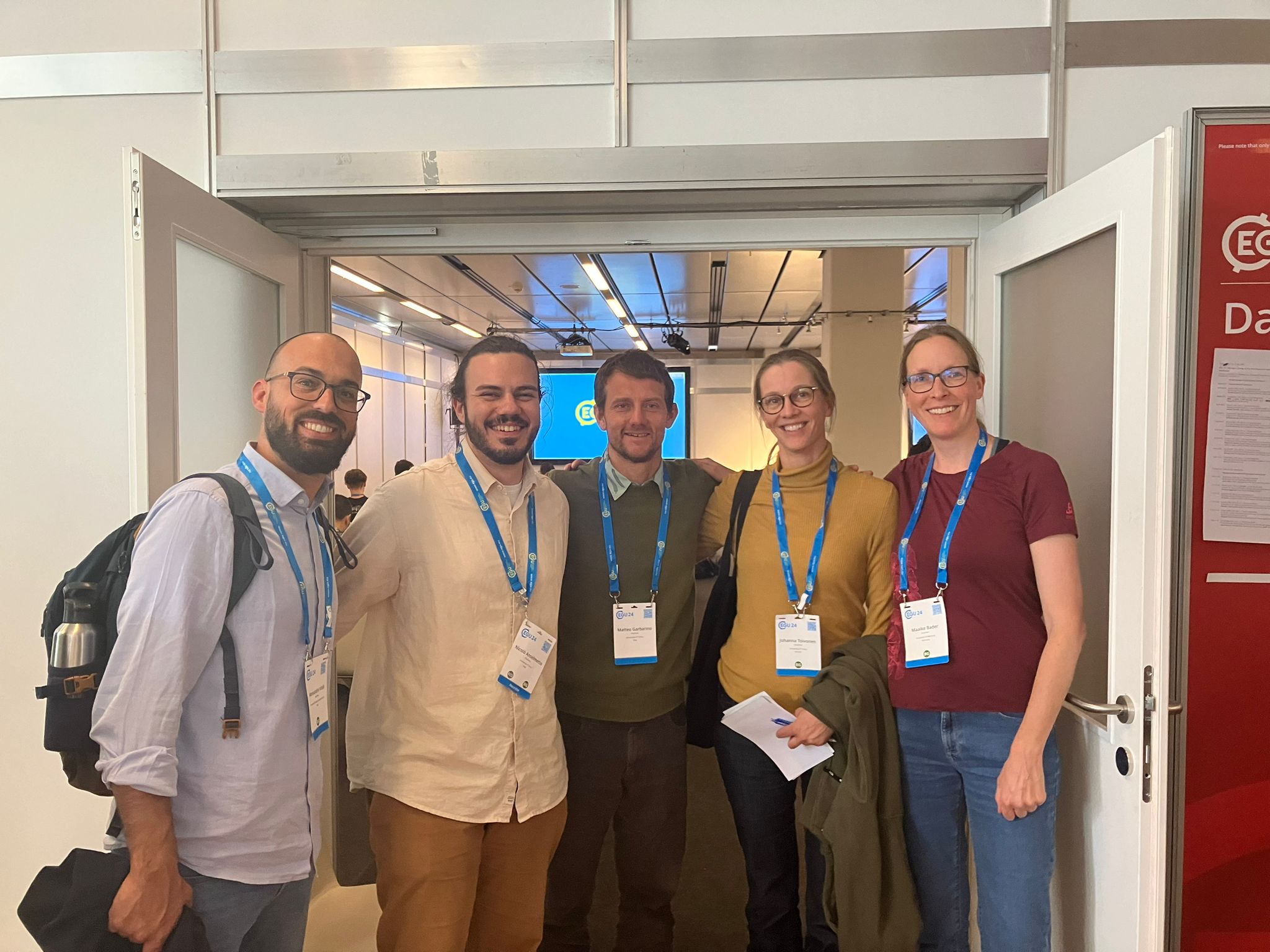
A special issue on
"Treeline ecotones under global change: linking spatial patterns to ecological processes",
in the journal Biogeosciences is now open for submissions. This special issue emerged
as a result of the treeline session at the EGU General Assembly 2024, but it is open for additional contributions.
Issue editors are Matteo Garbarino (University of Torino) and Frank Hagedorn (WSL).
By: Johanna Toivonen, May 3, 2024

Convener team of the EGU24 treeline session. (Photo: Diana Tomback)
In April 2024, an interesting and well-attended treeline session,
called “Treeline ecotones under global change: linking spatial patterns to ecological processes”
, took place at the
European Geosciences Union (EGU) generall assembly in Vienna.
The EGU is one of the biggest geoscience conferences worldwide.
It covers all disciplines of the Earth, planetary, and space sciences, bringing together geoscientists, geographers,
ecologists, etc., from all over the world. This year, more than 18 000 attendees from 116 countries met physically
in Vienna and a couple of thousand more joined online.
EGU puts a special emphasis on Early Career Scientists (ECS) and this year more than half of the abstracts mentioned
an ECS contribution. We also emphasised ECS contributions in the oral presentations of our treeline ecotone session
and between the poster and oral presentations we had a pleasure to hear 12 excellent presentations of ECS attendees.
The room was full and we got interesting questions and discussions during and after the session. Similarly,
the poster session was very lively. Each poster author presented their poster in turn and people followed the
presentations intensively.
The 10 posters and 10 talks presented recent and ongoing research across
scales of treeline ecology from local drivers of tree recruitment
(Sindewald et al, Tomback et al, Ramírez et al) through landscape-scale ecotone patterns
(Carrieri et al, Bader et al) and regional-scale patterns of treeline change (Delpouve et al, Maroschek et al, Nguyen et al)
to large-scale patterns across whole mountain ranges and beyond (Urbinati et al, Baglioni et al, Kruse et al,
Corimanya et al, Zou et al). Methods presented included remote sensing (many posters and talks), including very-high-resolution
drone-based remote sensing (Carrieri et al), modelling (Bader et al), dendroecology (Oberhuber et al, Vitali et al,
Liang et al), field inventories (Ramírez et al, Tomback et al, Varsova et al).
We also met with part of the session participants for a "treeline dinner" after the session. A lively discussion continued
there about diverse treeline and other topics. On the last day of the conference we got together again to discuss
about the contributions to the special issue of the journal Biogeosciences (see below) and other future collaborations.
Consensus was that in spite of much progress in recent years, a lot remains to be done and international
scientific cooperation will be key to unravel the
drivers and limitations of treeline dynamics in different parts of the world.
I think everybody traveled home with an overwhelming amount of new information, new ideas, and enthusiasm!
Johanna, on behalf of all the session conveners: Matteo Garbarino, Nicolò Anselmetto, Maaike Bader, Johanna Toivonen, Alessandro Vitali.
You can access the session abstract
here (Terrestrial Biogeosciences section, Session Nr. 3.26)
.
Back to top

